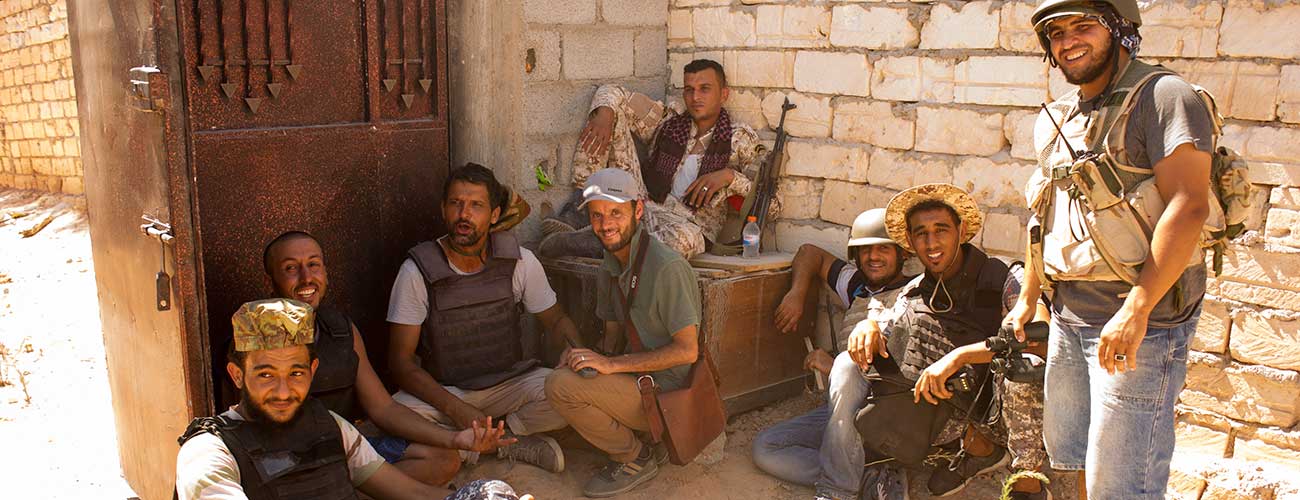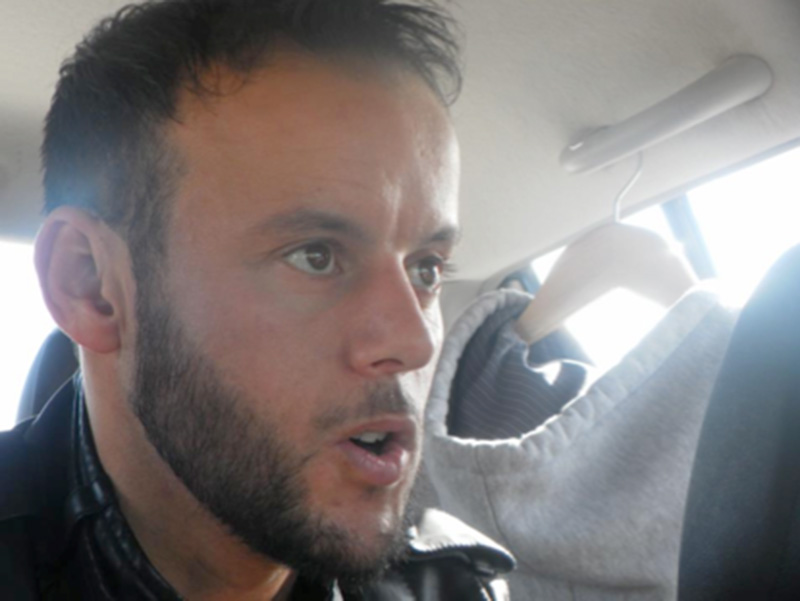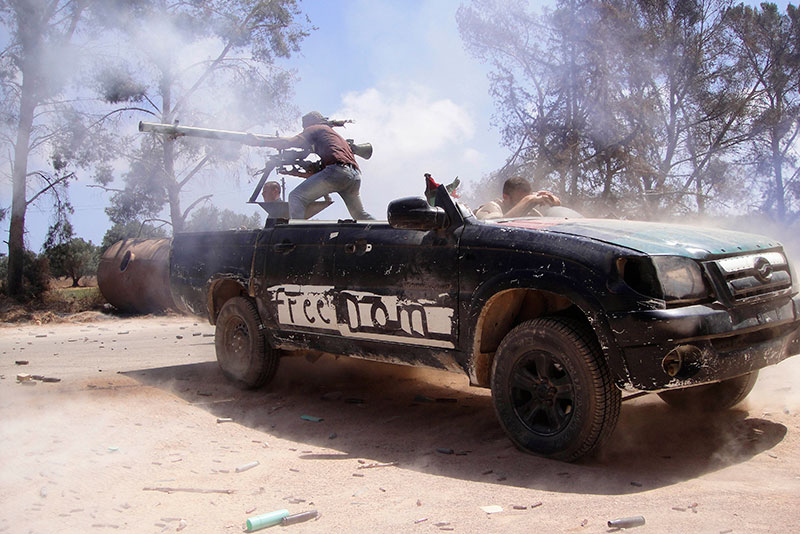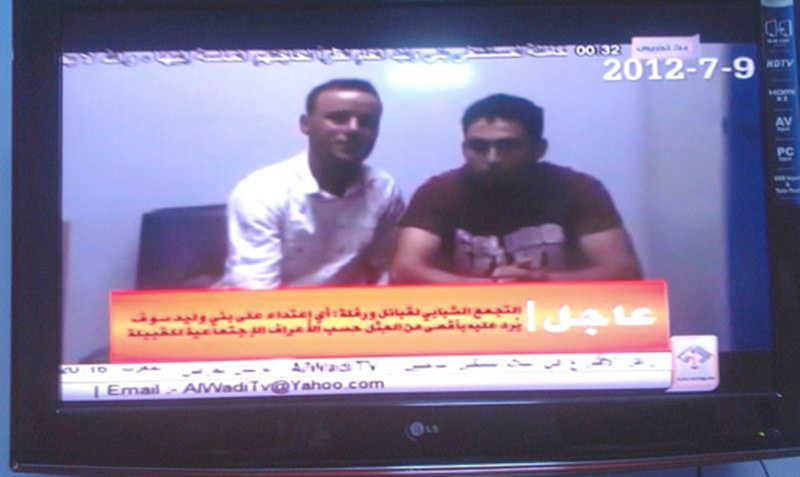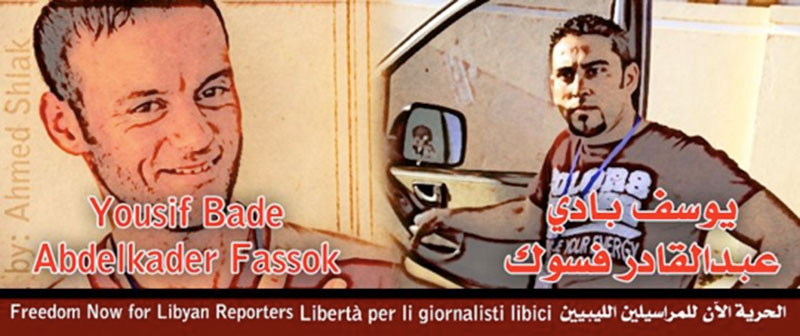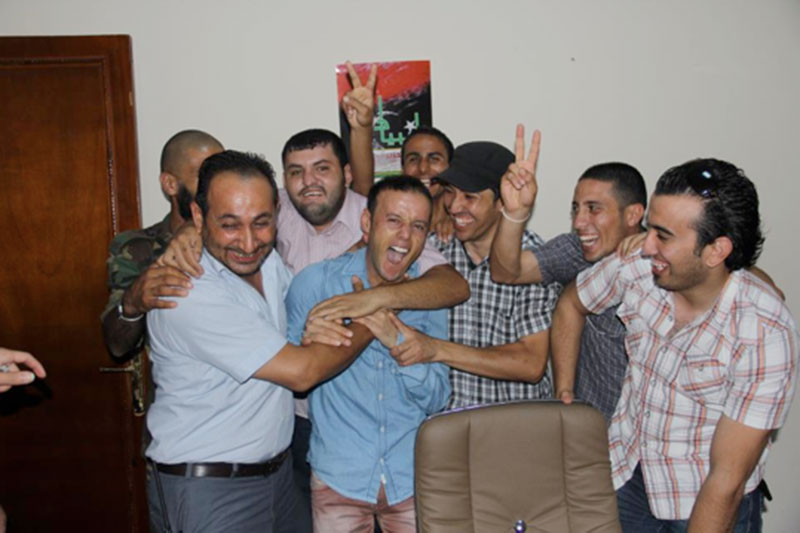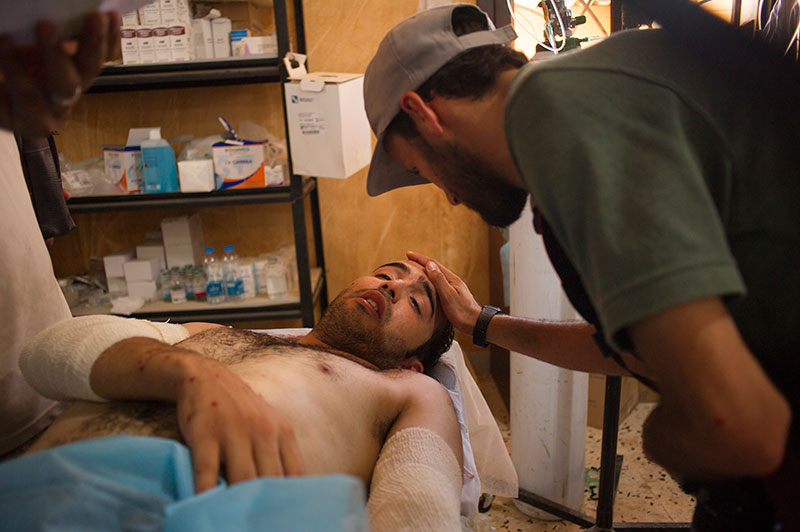Sign up for the daily CJR newsletter.
The killing of a young Libyan photojournalist named Abdel-Kader Fassouk, on July 21, 2016, in Sirte, Libya, will likely never be more than a footnote to what increasingly seems like a widespread war on journalists. Fassouk wasn’t famous, and the number of journalists killed in conflict zones is so staggering that another one seems sadly commonplace.
Yet Fassouk’s death is noteworthy, not only to those who knew him, but because he embodied journalism in its rawest form, and because his relationship with death was already so intimate. He was part of a growing cadre of self-trained freelance and citizen war journalists intent on ensuring that every conflict is exhaustively documented and publicized, and, like many of them, he had faced death many times.
Western audiences tend to pay close attention when famous journalists like Tim Hetherington and James Foley are killed, but less so when it happens to an unknown journalist who is doing the same work. It’s a dangerous profession, we say. These things happen. Fassouk’s story is one among many that illustrates precisely how they happen.
(Photo courtesy of Abdel-Kader Fassouk)
In the summer of 2012, while researching a biography of Hetherington, I met Fassouk in Misrata, Libya, where Hetherington had been killed the year before. Fassouk was a slight, animated young man who had been a photographer and videographer for the Libyan rebels in Misrata during the city’s four-month siege by Gadhafi forces, and he admired Hetherington’s work. At the time, he and I were helping Brazilian photographer Andre Liohn set up an exhibition called Almost Dawn in Libya, of images of the Libyan uprising. It made for a seemingly odd staging in a country that was still more or less at war, and brought together an array of Misratans to reflect on their shared experiences during the Arab Spring.
When I first saw Fassouk, he was standing in the lobby of the former Goz el-Teek Hotel, where the exhibition was being staged, beside a window that looked out onto banks of purple flowers and gilded bomb debris, beyond which ranks of shattered doorways led to burned-out rooms. I noticed a terrific scar stretching across his neck that disappeared beneath the collar of his shirt. When I later asked him about it, he recounted the first of many dramatic scenes he would tell me about in his remarkable life story.
Fassouk was 24 when we met and knew many of the photographers featured in Liohn’s exhibit, some of whom had been killed. After having been shot twice in different episodes, Fassouk had also come close to dying while filming on the front line during the siege, which is how he earned the scar on his neck and another on his back that marked the bullet’s exit wound. Unlike most of the photographers whose work hung in the exhibition, he was unknown outside Libya.
Fassouk took this picture of rebel fighters firing a rocket towards pro-Muammar Gaddafi forces in Misrata, Libya, in 2011. (Photo: AP/Abdel-Kader Fassouk)
The siege of Misrata is best known in the West for the tandem deaths of Hetherington and Chris Hondros, another famous Western photographer, in an April 2011 mortar attack. But the majority of journalists killed while covering war in recent years have, like Fassouk, been unknown. Aside from the focus in the United States on the killing of American Ambassador Christopher Stevens in Benghazi in 2012, few in the West have paid close attention to the details of what has been happening in Libya, including its personal toll, which Fassouk was intent on documenting. In the grand scheme of things, he was just a young guy living in a war zone whose name has a dozen different transliterated English spellings, who was trying to find his way and make an impact. Through his work, which rarely appeared in major publications, it is possible to view every phase of a pivotal, modern conflict up close and personal, to move freely behind the scenes during the end of Gadhafi’s reign, along the front lines with the rebels during the uprising, through captivity in a postwar intertribal fight in the desert, and finally, to a showdown with ISIS, which is what ultimately cost Fassouk his life.
Fassouk’s first brush with death came on the day he told me about when he was on the front lines and a nearby rebel who was trying to unjam his Kalashnikov accidentally fired the rifle and shot him in the neck. A cousin of Fassouk’s who was also a rebel fighter compressed the wound with his headscarf to stanch the flow of blood as the rebels raced him to the city’s only functioning hospital, which is where Hetherington and Hondros died. Fassouk soon lost consciousness and remained comatose for a week. He later remembered dreaming of white clouds and of the people he had known who died. Hearing him recount the experience, his brother, standing nearby, said his survival “was like magic.”
Then, on July 7, 2012, the day Libya held its first elections since 1954, which coincided with the day of my departure from Misrata, Fassouk became an unwitting catalyst for renewed violence when he was kidnapped with another local cameraman, Yusef Badi, while reporting on the election. It was an isolated episode that set in motion a cascade of events from which a wider conflict unfolded. During their captivity by a rival militia in the desert city of Bani Walid, Fassouk and Badi’s captors posted the requisite online videos of them, threatening to kill them. The videos made them both rallying points for conflicting views on what had happened in Libya and what would happen next. In the videos, Fassouk appears oddly undisturbed, almost content.
He later told me he was more incredulous than afraid. His life had taken another totally unexpected turn, with consequences that extended far beyond his own wellbeing. Perhaps it felt good that his life mattered so much to so many.
Until then, issues relating to Fassouk’s wellbeing had, for the most part, been important only within his relatively small circle of family and friends. Now he was not only reporting the story, he was a part of it and was influencing how it played out. Images of him and Badi went viral on Libyan social media.
Fassouk had been an amateur photographer when the Libyan revolution first engulfed Misrata, when anyone who remained was compelled to play a role–his was to shoot video. The siege was intensively documented in photographs and video, perhaps more so than any uprising or war before it, and Fassouk filmed the fighting as well as scenes at triage centers and funerals and inside private homes, wrecked buildings, and mangled ambulances. It was something other local journalists were doing or would do in countless conflict zones, sometimes paying with their lives for the powerful, if often scant exposure they brought to the wars. Afterward, Fassouk had taken a job as a cameraman for Tobacs TV, which is how he got caught up in the mounting tensions between rebel and lingering pro-Gadhafi militias in Bani Walid, where he and Badi were held captive for 10 days, until the fledgling government negotiated their release.
Fassouk celebrates with friends after his release. (Photo courtesy of Abdel-Kader Fassouk)
Those tensions escalated after the death as a result of the alleged torture in Bani Walid of one of the journalists’ would-be rescuers, Omran Shaaban, who was known for having pulled Gadhafi from the drainage pipe where he had been hiding before his execution in his hometown of Sirte. Soon after, the Misrata militia, in concert with Libyan government forces, besieged Bani Walid, killing numerous civilians and loyalist militia members.
Meanwhile, the Almost Dawn in Libya exhibition traveled to Tripoli, where Ambassador Stevens was among the opening night attendees. Stevens, who was a champion of the Libyan rebels, would be killed at the US Consulate in Benghazi a month after the journalists’ release.
Though news coverage of Libya’s post-conflict conflict was largely eclipsed by Stevens’s assassination, an estimated 500 people stormed the parliament in Tripoli to protest the Bani Walid attack and a mob attacked a Benghazi TV studio for allegedly inciting the violence. The widening turmoil never fully abated, and the failure of Libya to stabilize eventually attracted ISIS, which found a stronghold in Sirte. The Misrata militia is chief among the groups battling ISIS, and Fassouk naturally went with them to document the protracted fight.
I didn’t see Fassouk again after departing from Misrata, though we communicated intermittently by email. Initially, it was clear that he was enjoying himself after his second reprieve from death, though by January 2013 he seemed restless, ready to move on to the next chapter of his unpredictable life. He decided to travel to Syria, where the Arab Spring had reached its nadir, and where more journalists have died than in any conflict since records were first kept in 1992. He hoped for an assignment with a Western media outlet, though he wondered if anyone really cared. Did it matter to the rest of the world that thousands of Syrians, together with many journalists, were being killed, that matters of great import were being decided there, and that he was well-positioned to document such things, and maybe get killed himself? Fassouk emailed me that he was “obsessed with this and have the desire and ambition to be a war correspondent successful as the late journalist Marie Colvin.”
During the following three years, Fassouk managed to publish some of his photos with larger media outlets, some of which had picked up his images during the uprising in 2011, including the Associated Press and Time. At the time of his death he was working on assignment for Arraed, a satellite news service based in Istanbul.
Fassouk comforts Mohammed Agoub, a local journalist who stepped on a land mine near Sirte. Fassouk was with Agoub at the time and carried him to the hospital. This photo was taken on July 21, a few hours before Fassouk was killed by a sniper. (Photo by Andre Liohn)
On July 21, 2016, Ahmed Shlak, another Misrata videographer and photographer, posted the news on Facebook of Fassouk’s death in Sirte, where he was covering the ISIS fight with Andre Liohn.
In an email, Liohn said he was uninjured but that Fassouk had been fatally shot in the head, apparently by an ISIS sniper. He died instantly. Liohn also posted video of Fassouk photographing the fighting in Sirte:
In response to Fassouk’s death, the Committee to Protect Journalists issued a news alert noting that he was the second Libyan journalist killed in less than a month, after journalist Khaled al-Zintani was shot and killed while covering clashes in Benghazi on June 24. The alert also reported that a local press freedom group, Libyan Center for Freedom of the Press, said Fassouk “spoke to its researcher the day before he was killed and emphasized that journalists covering the war against the Islamic State group face serious risks, including lack of safety equipment, and that journalists had been repeatedly trapped in the fighting.”
Arraed published several reports by Fassouk from Sirte during the fight with ISIS, as well as an interview, on its YouTube channel. In one video, his colleague Yasin Khattab says, “His motive was always [finding] the truth and nothing more. He was our first source for information and verification.”
Fassouk had no illusions about being an objective bystander to the conflict, and he was undeterred by both his kidnapping and his brushes with death. We often talked about the boundaries between journalism and activism that he freely crossed, which have become increasingly blurred, and not only by cameramen-rebels. Journalists are often targeted by oppressive regimes and rebels alike, as well as by terrorist groups like ISIS. In the end, Fassouk said, it’s hard to be objective about someone who is trying to kill you.
Has America ever needed a media defender more than now? Help us by joining CJR today.



